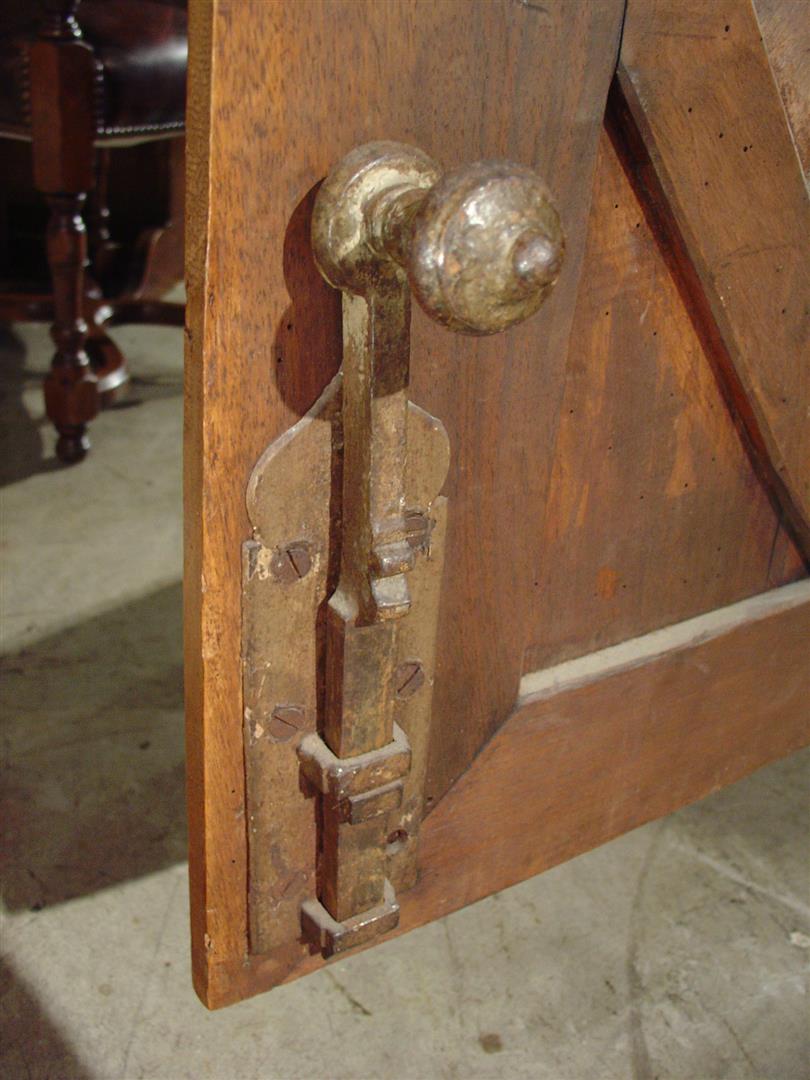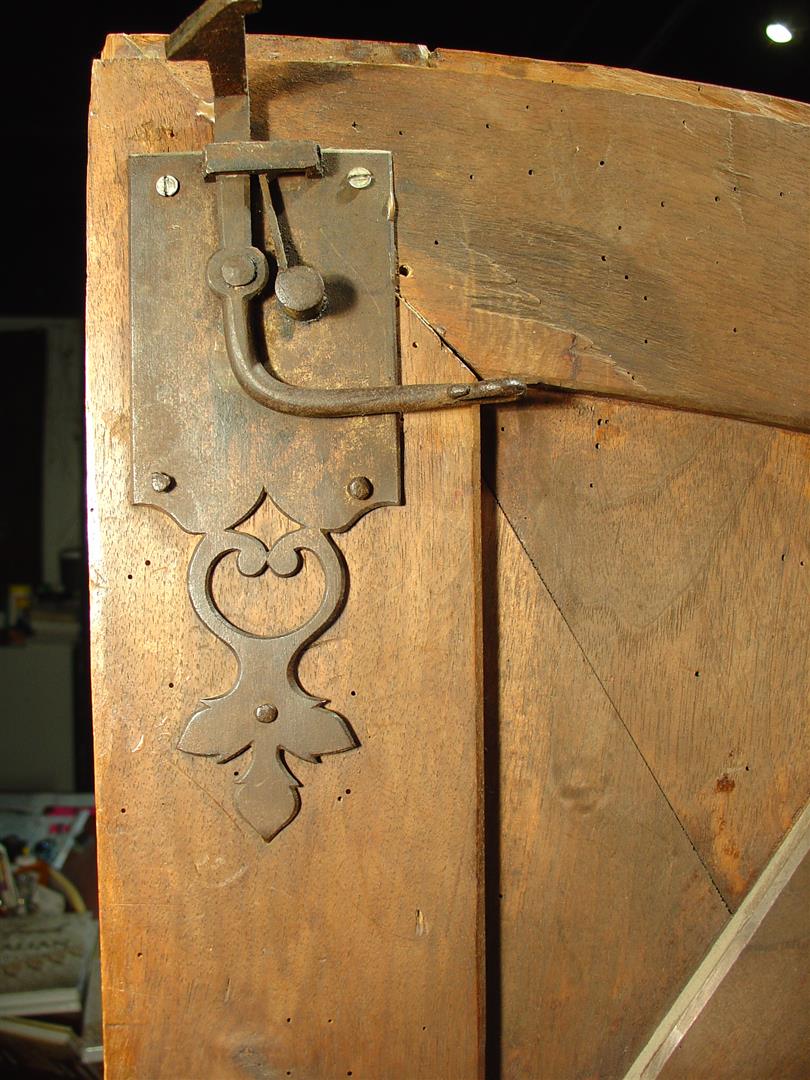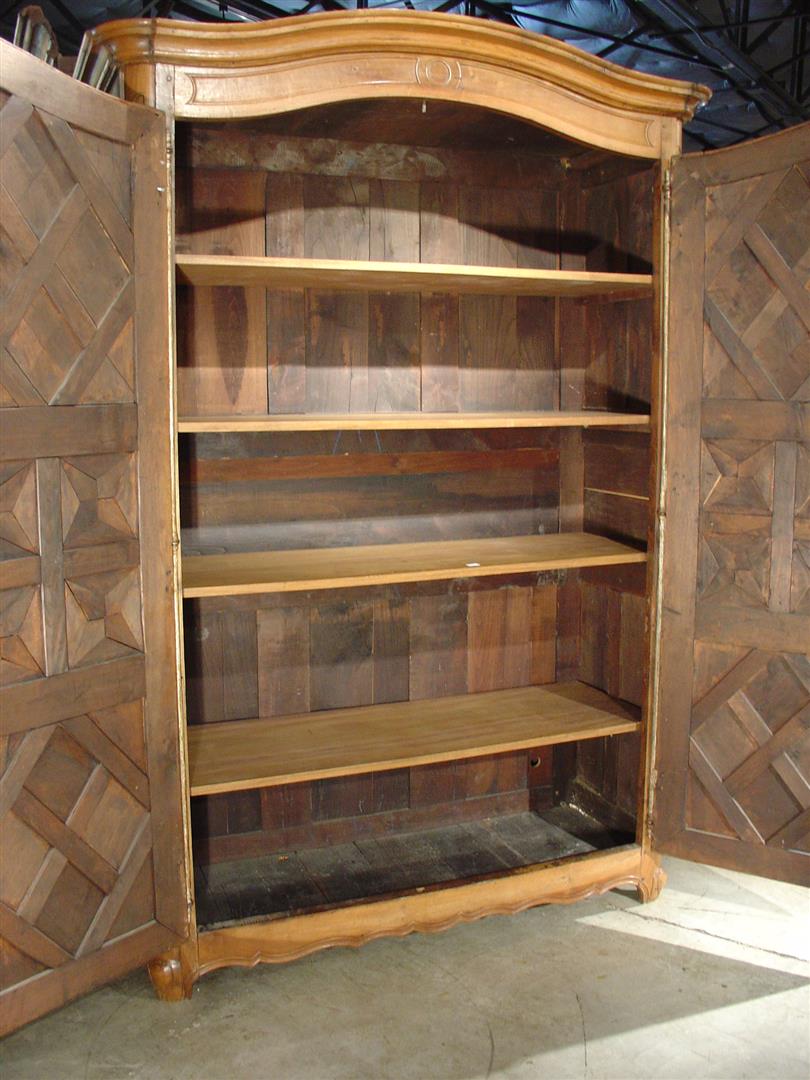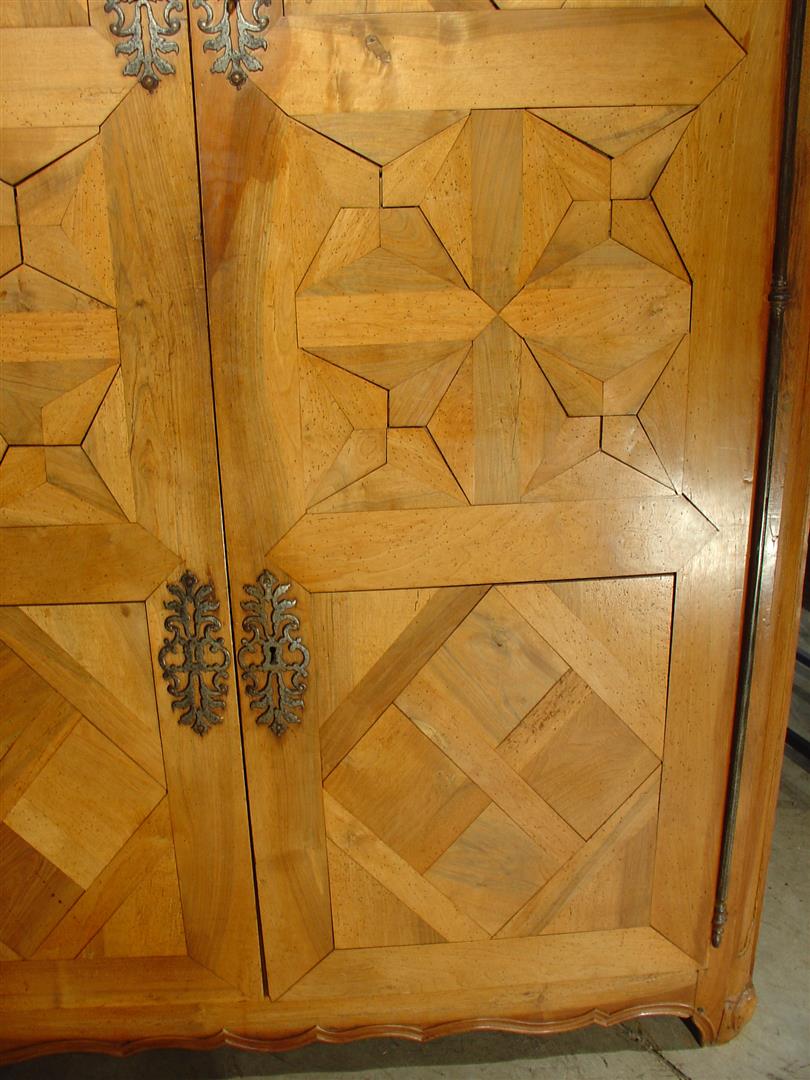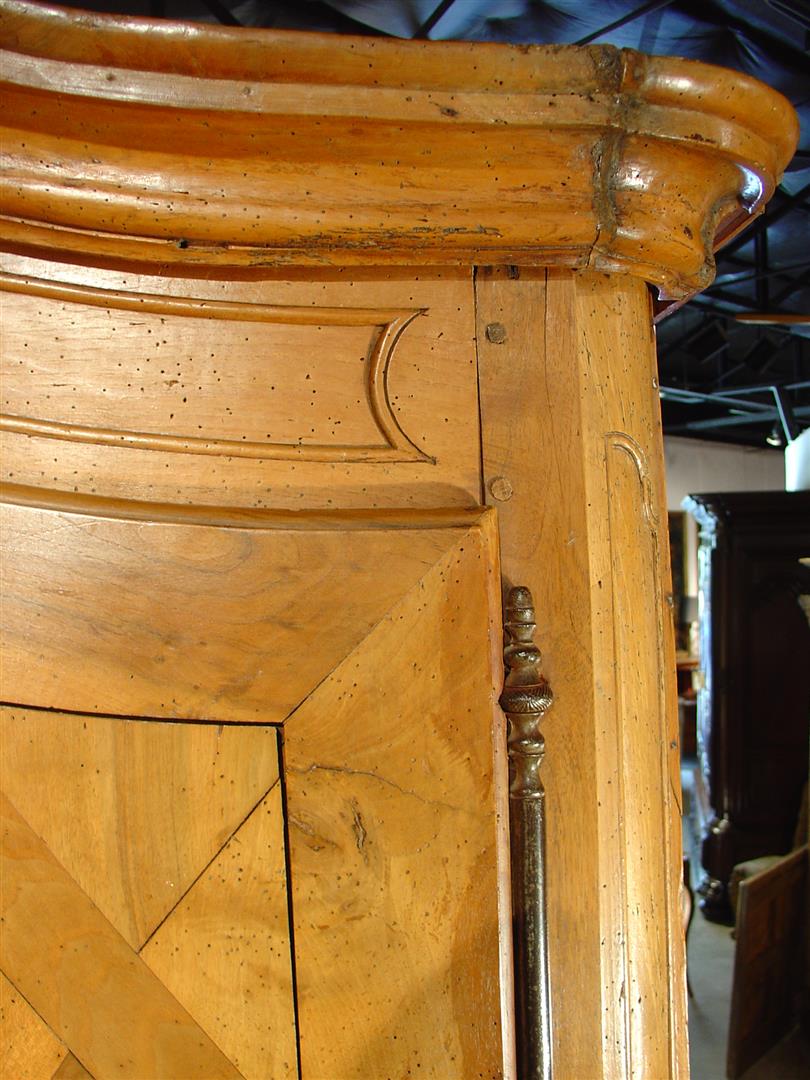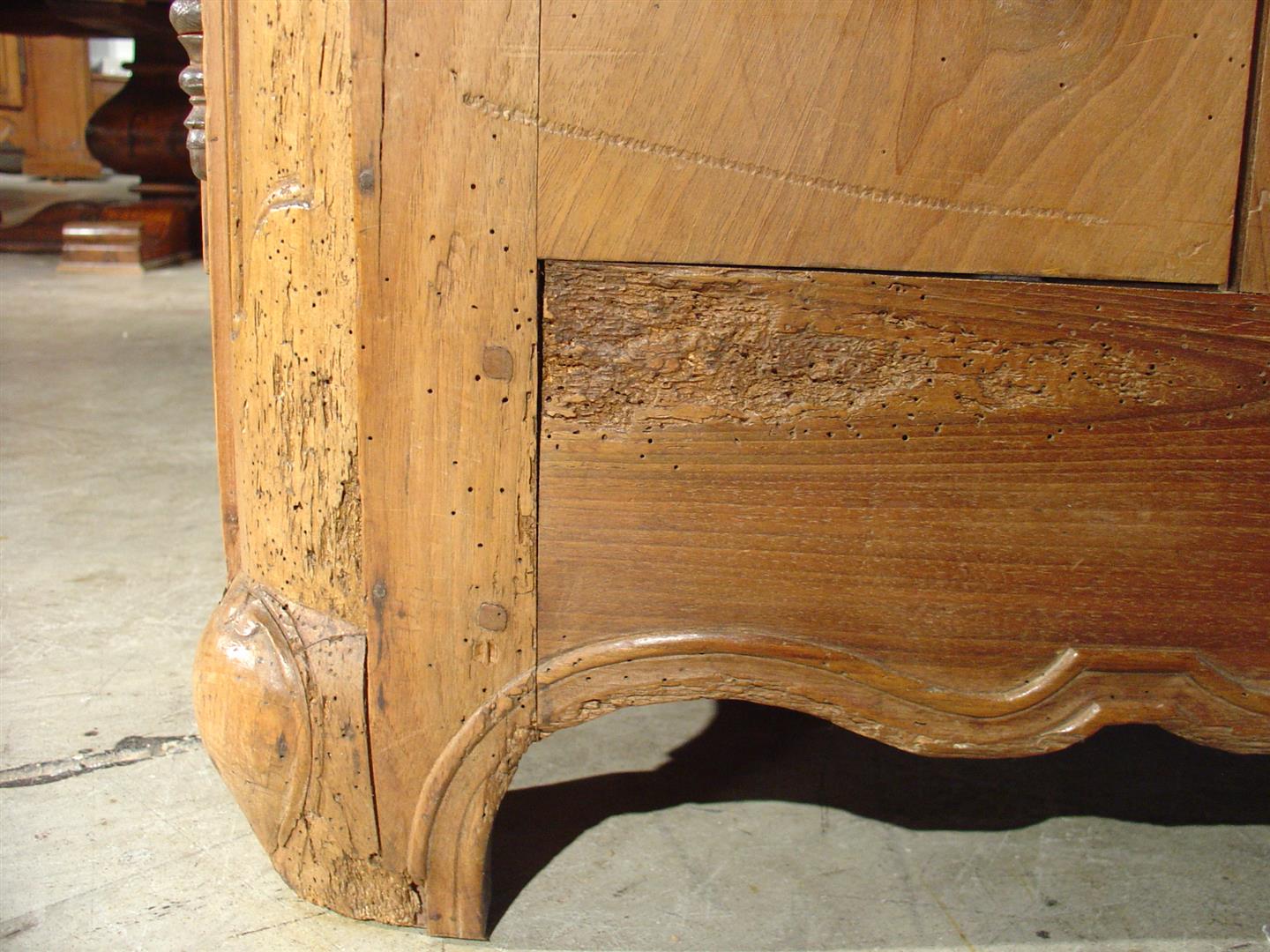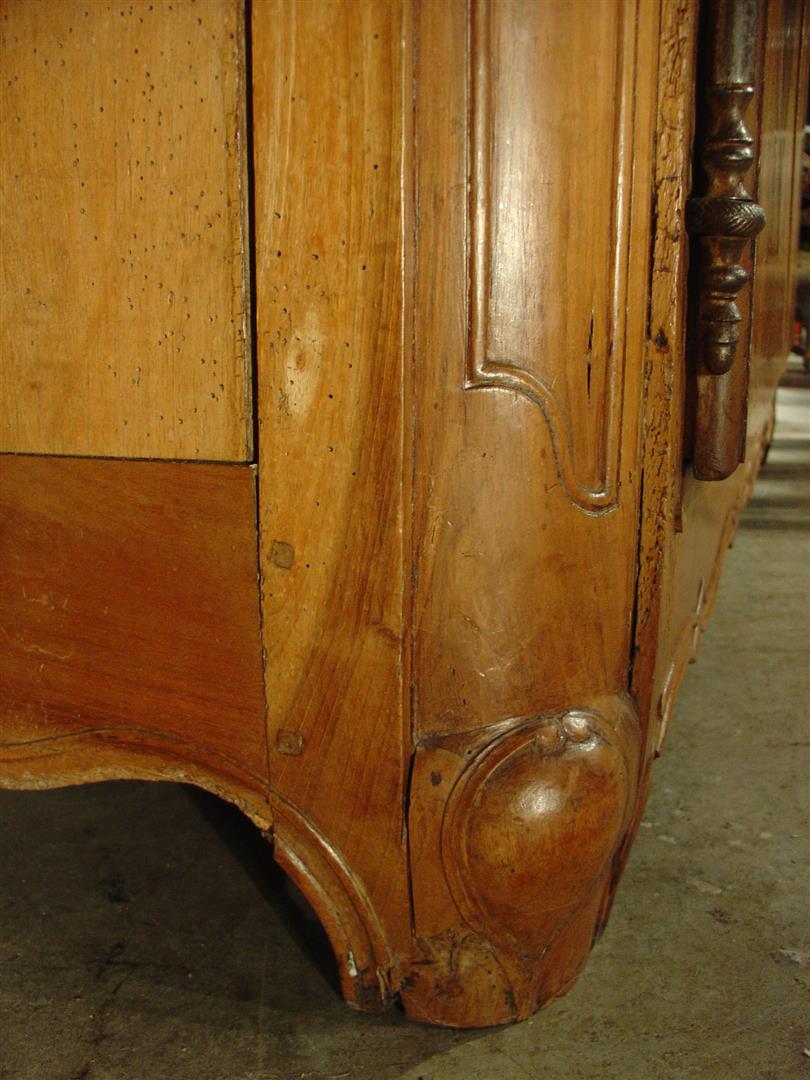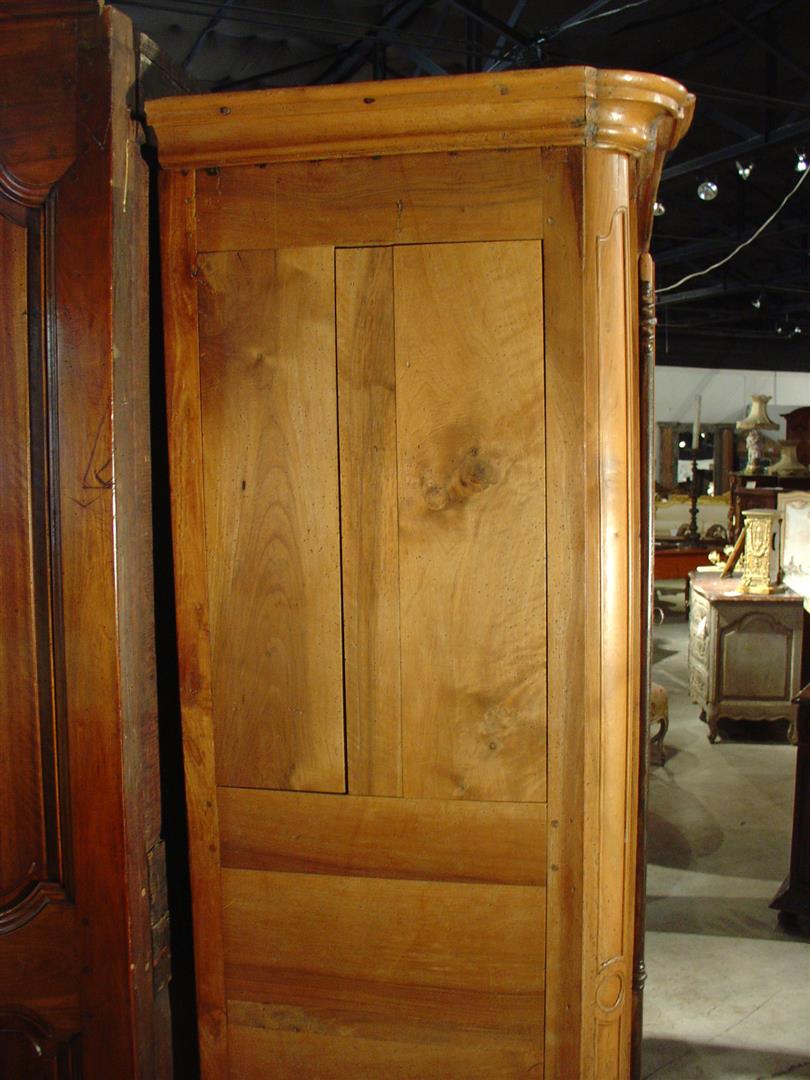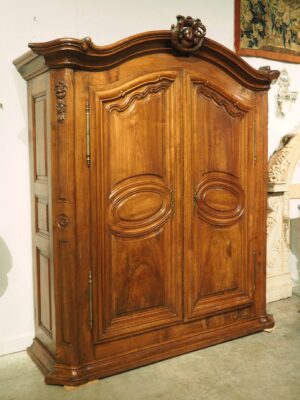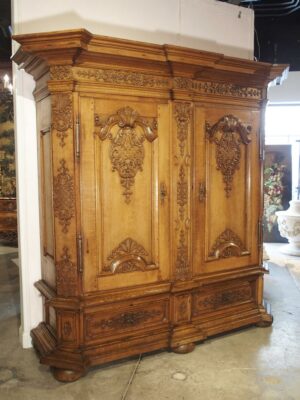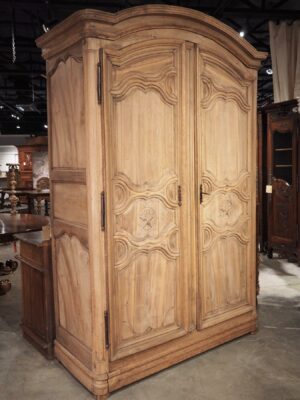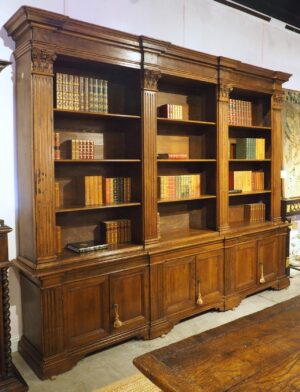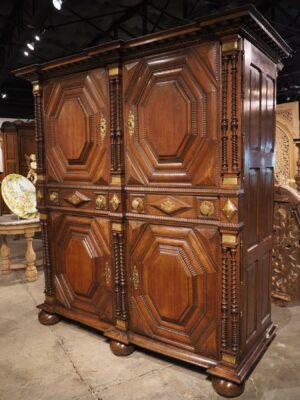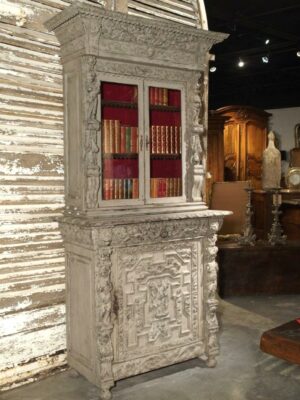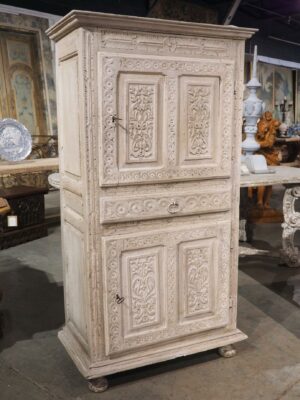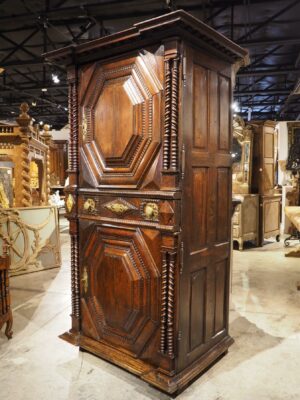A very unusual parquet armoire coming directly from a home in Brittany. An old ebenist of the area from which this armoire originates is quite confident that this wood was harvested in the Forest of Troncais due to the very few knots visible in the graining. The forest was originally comprised of black oak and dates thousands of years. But starting in the 1600’s, the French Navy implanted Beech trees to promote very straight growth. The straightest trees were used as masts in King Louis XIV’s navy while other woods were used for different parts of the ships. Unlike the majority of the pieces we see, this particular armoire has a clear lineage pointing to Chateau Bienassis, near Erquy France, and is at least 200 years old.
This armoire has an overall unencumbered silhouette, with the clean lines given depth and texture by two patterns of parquet having varying depths of color in the woods. There are rounded corners with asymmetrical panels interrupted at the center by a simple circular motif. This motif is also found on the frieze’s panel beneath the thick, stepped out crown. The parquet doors each have three panels, with the top and the bottom panels having diagonal parquet. The center panels feature stylized diamond point parquet panels, again giving interest to its overall clean lines. There are full length hinges attaching the doors to the body. There are four pierced foliate back plates with only one key to the top lock. The doors are held securely in place by two interior latches at the top and bottom of the left hand door. The shaped apron has only linear moldings outlining the form. The sides have only vertical and horizontal boards delineating the sections so as not to break the simplicity of the lines. The knees of the legs are raised ovals and the feet, worn down over the centuries, have the beginnings of slightly curved shapes they would have had originally. The interior is very clean and has four shelves. Everything is original to this magnificent armoire from Brittany.
Condition: Old restorations, age separations, traces of old woodworm



